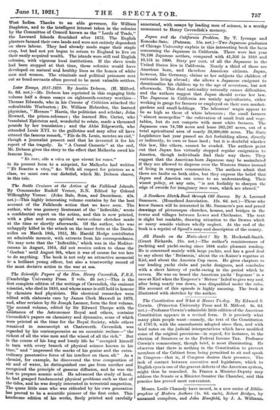The Development of the Leeward Islands under the Restoration. By
C. S. S. Higham. (Cambridge University Press. 20s. net.) This able essay shows how interesting our early colonial history may be when it is worked out in detail from State papers and other manuscript records. Mr. Higham is concerned with Antigua, Montserrat, Nevis, and St. Christopher, between 1660 and 1688. St. Christopher had been divided, since it was first colonized, between the English who held the central portion and the French who held the two ends, and it therefore played a great part in the conflict between England and France in the
West Indies. Thanks to an able governor, Sir William Stapleton, and to the intelligent interest taken in the colonies by the Committee of Council known as the " Lords of Trade," the Leeward Islands flourished after 1672. The English planters farmed their own lands and were not entirely dependent on slave labour. They had already made sugar their staple crop, but had not yet begun to return to England to live on their easily acquired wealth. The islands were still real English colonies, with vigorous local institutions. If the slave trade had been stopped at that time, these colonies would have developed on natural and healthy lines as the homes of white men and women. The criminals and political prisoners sent out as bond-servants often proved to be most valuable settlers.



































 Previous page
Previous page